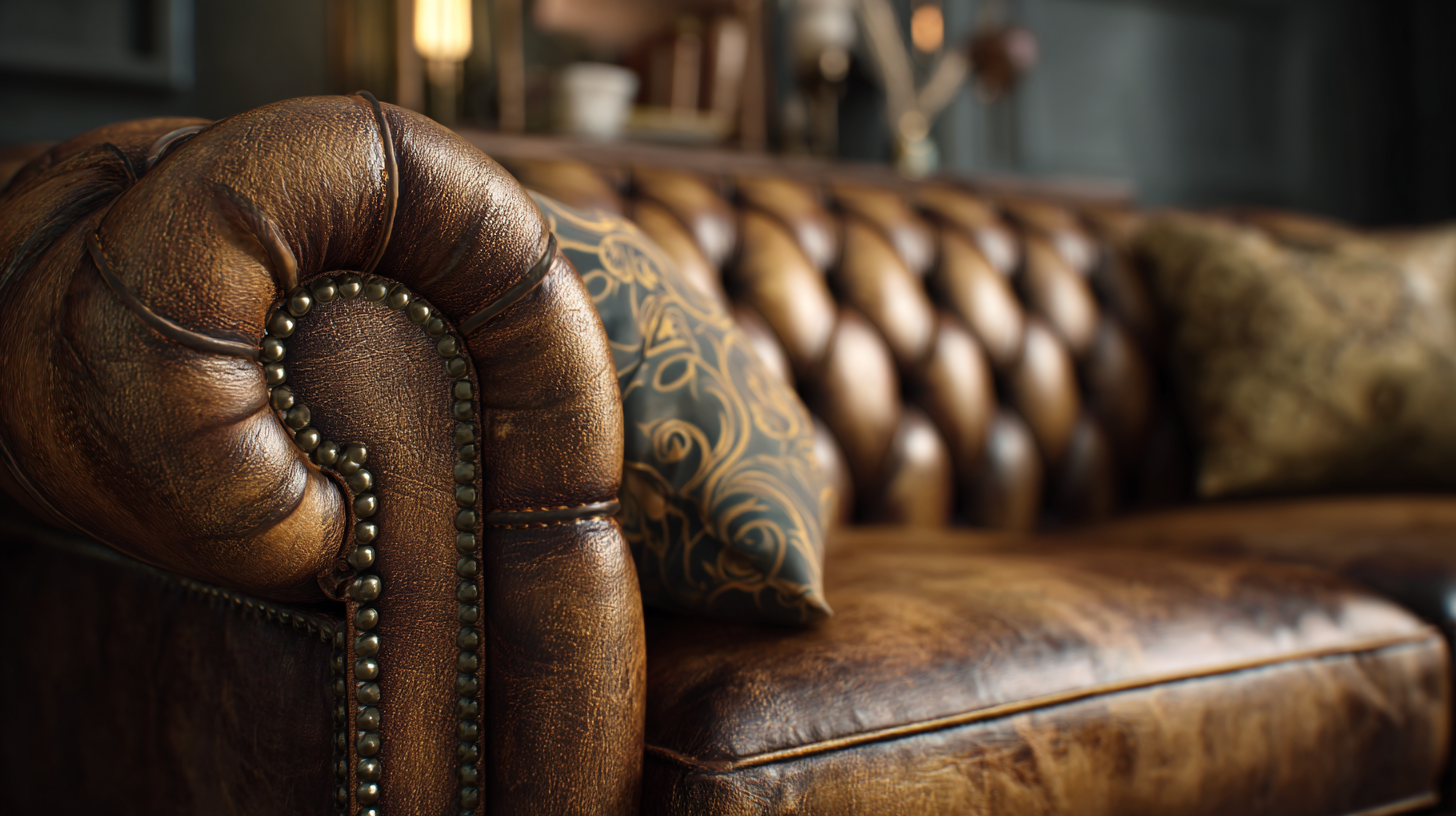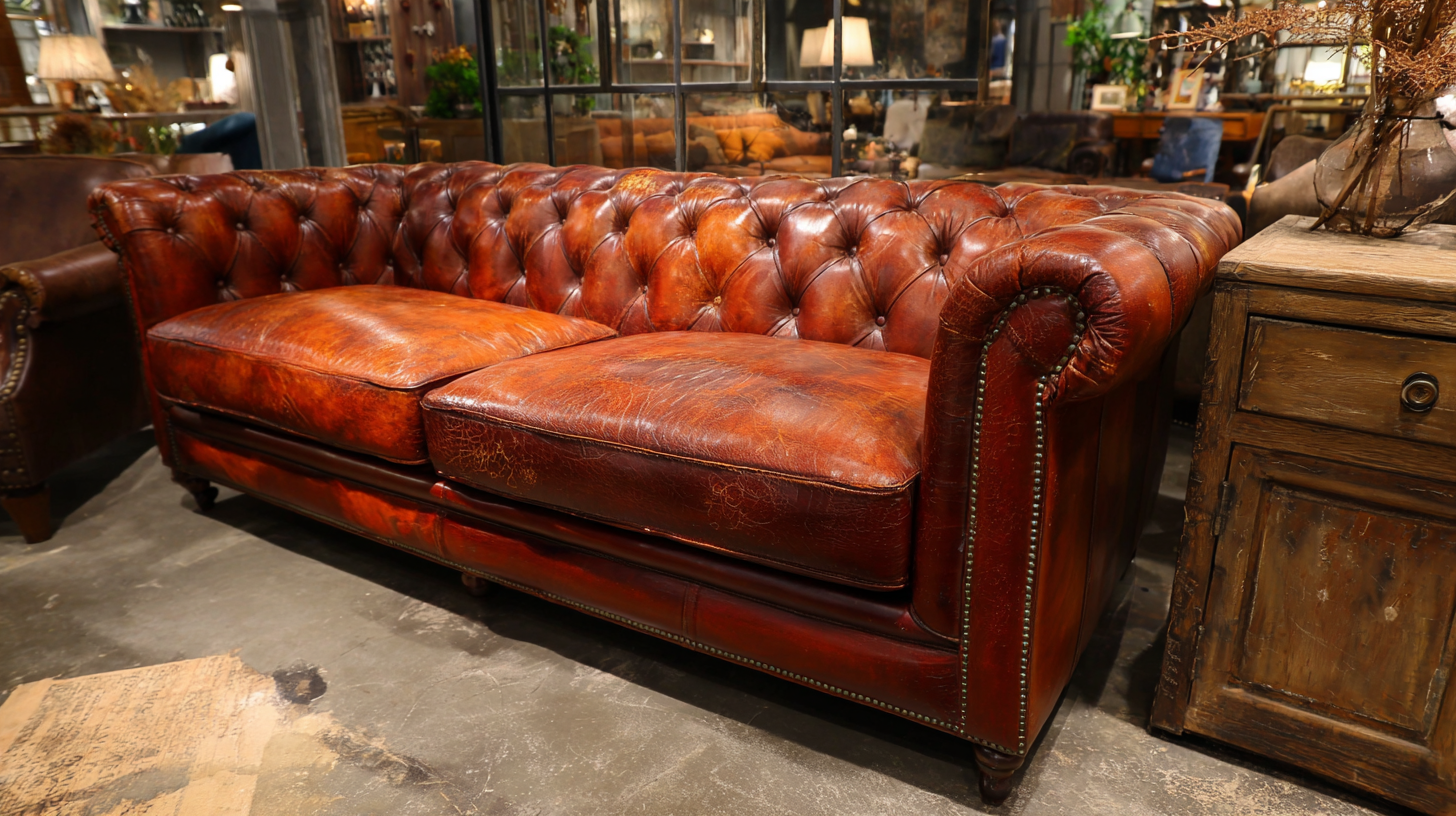Understanding the Technical Specifications of Best Sofas Leather and How to Choose the Right One for Your Needs
In the realm of home furnishings, the choice of sofas leather stands out as a significant investment that can enhance both the aesthetics and comfort of your living space. According to a recent industry report by the American Home Furnishings Alliance, leather upholstery accounts for approximately 20% of the total sofa market, reflecting its growing popularity among consumers who value durability and style. With advancements in tanning technology and a surge in demand for environmentally sustainable materials, today's leather sofas offer an array of specifications that cater to diverse needs and preferences.

This blog aims to demystify the technical specifications of the best leather sofas on the market and provide a comprehensive guide on how to select the perfect piece that aligns with your lifestyle and design sensibilities.
Different Types of Leather Used in Sofa Manufacturing
When choosing a leather sofa, understanding the different types of leather used in manufacturing is crucial. The three primary categories of leather are full grain, top grain, and bonded leather.
 Full grain leather is the highest quality, preserving the natural texture and grain patterns of the hide. This type of leather ages beautifully, developing a rich patina over time while showcasing its durability and luxury appeal. It is a perfect choice for those seeking a timeless and robust investment in furniture.
Full grain leather is the highest quality, preserving the natural texture and grain patterns of the hide. This type of leather ages beautifully, developing a rich patina over time while showcasing its durability and luxury appeal. It is a perfect choice for those seeking a timeless and robust investment in furniture.
Top grain leather, while slightly more processed, offers a balance between quality and cost. It is sanded and treated to remove imperfections, resulting in a softer and more uniform appearance. Although it may lack some of the character seen in full grain leather, top grain still provides excellent durability and a refined look, making it suitable for families or high-traffic areas.
On the other hand, bonded leather, made from leftover scraps and synthetic materials, is often considered a budget-friendly alternative. While it offers a stylish look, it may not be as long-lasting or resilient as its full and top grain counterparts, making it essential to consider your lifestyle and needs when choosing the right sofa.
Key Technical Specifications to Consider When Buying Leather Sofas
When considering the purchase of a leather sofa, several key technical specifications should guide your decision-making process. First and foremost, the type of leather is crucial. According to a report by the Leather Research Institute, full-grain leather, known for its durability and natural look, is preferred by 70% of consumers seeking high-quality upholstery. This type of leather retains its natural grain, making each piece unique, while top-grain leather, which is more polished and easier to maintain, is favored for its soft texture and affordability.
Another important specification is the frame construction of the sofa. Research from the Furniture Association indicates that sofas with solid hardwood frames have a lifespan that exceeds couches with metal or particle board frames by nearly 50%. Additionally, the cushioning materials used can greatly influence comfort and longevity. High-density foam, often tested to ensure it retains its shape after extended use, is recommended for seating surfaces to maintain comfort over time. Understanding these specifications can help you make an informed decision, ensuring that your investment in a leather sofa fulfills both aesthetic and functional needs.
Understanding the Technical Specifications of Best Sofas Leather and How to Choose the Right One for Your Needs - Key Technical Specifications to Consider When Buying Leather Sofas
| Specification | Description |
|---|---|
| Leather Type | Top Grain, Full Grain, Corrected Grain, Split Leather |
| Thickness | 1.2 mm - 2.2 mm, affects durability and feel |
| Finish | Aniline, Semi-aniline, Pigmented |
| Maintenance | Regular cleaning, conditioning to prevent dryness |
| Durability | Varies by leather type; full grain is most durable |
| Comfort Level | Influenced by cushioning materials and leather type |
| Environmental Impact | Consider sustainable sourcing and tanning processes |
| Warranty | Length of coverage can vary; important for investment |
How to Evaluate Sofa Durability and Comfort: Materials and Construction
When selecting a leather sofa, evaluating its durability and comfort is essential to ensure you make the right investment. Start by examining the materials used in both the frame and upholstery. High-quality leather, such as top-grain or full-grain, is more durable and develops a beautiful patina over time. Avoid corrected grain leather, which may look visually appealing but tends to be less robust and prone to wear. Additionally, the sofa's frame should ideally be constructed from solid hardwood, as it provides a stable foundation that resists warping and sagging over time.
Construction methods also play a significant role in a sofa's longevity and comfort. Look for features like corner blocks, which enhance stability, and reinforced seams that protect against fraying and tearing. Meanwhile, the type of cushioning used affects comfort levels—high-density foam or down blends are often preferable, providing support without sacrificing plushness. As you evaluate your options, consider how the sofa will be used daily and the level of traffic it will endure, ensuring that your choice aligns with both aesthetic appeal and practical functionality.
Choosing the Right Style: Modern vs. Traditional Leather Sofas
When it comes to selecting a leather sofa, the choice between modern and traditional styles can significantly influence your living space's aesthetic and functionality. According to a recent report by the International Furniture Design Association, modern leather sofas are gaining popularity, accounting for over 60% of the market due to their sleek lines and minimalist appeal. These designs often feature low profiles and geometric shapes, making them ideal for contemporary homes where space optimization is crucial.

On the other hand, traditional leather sofas, characterized by their rich textures and ornate details, continue to hold a strong position in the market, favored by over 40% of consumers seeking classic designs. A study by Furniture Today revealed that these options not only add a timeless charm but also provide a sense of comfort and nostalgia. They are typically larger and more substantial, making them suitable for spacious living rooms or family areas where traditional aesthetics can shine.
When choosing between these styles, consider how each complements your existing décor and fits within your lifestyle needs, ensuring that your investment in quality leather brings both beauty and practicality to your home.
Maintenance Tips for Keeping Your Leather Sofa Looking New
Maintaining a leather sofa can seem daunting, but with the right care, you can keep it looking new for years. First and foremost, regular dusting is essential. Use a soft, dry cloth to remove dirt and dust, which can accumulate and degrade the leather over time. It's advisable to do this weekly to prevent any dirt from embedding into the surface.
Next, conditioning your leather sofa is crucial. Leather is a natural material that can dry out, leading to cracks and a dull appearance. Use a quality leather conditioner every six months to nourish the material and keep it supple. When applying the conditioner, make sure to follow the manufacturer's instructions, applying it evenly and allowing it to absorb fully.
Lastly, protect your leather sofa from direct sunlight and heat sources, as these elements can cause fading and damage. Position your sofa away from windows and radiators, or use protective covers when necessary. By following these maintenance tips, your leather sofa can retain its elegance and comfort for many years to come.
